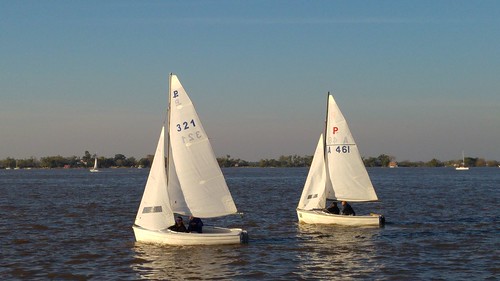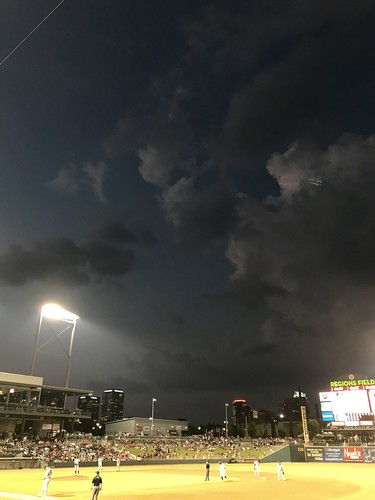Binant  AAV2 vectors containing either EGFP (scAAV2GFP) or firefly luciferase gene (Fluc) (ssAAV2-Fluc) driven by the chicken b-actin promoter (CBA) were generated as described previously [12,16,17,18]. Briefly, HEK293 cells were transfected using Polyethylenimine (PEI, linear, MW 25,000, Polysciences, Inc.). Seventy-two hrs post-transfection, cells were harvested and vectors were purified by iodixanol (Sigma) gradient centrifugation and ion exchange column chromatography (HiTrap Sp Hp 5 ml, GE Healthcare). Virus was then concentrated and buffer exchanged into Lactated Ringer’s solution in three cycles using centrifugal spin concentrators (Apollo, 150-kDa cut-off, 20-ml capacity, CLP). To determine genome titers, ten ml of purified virus were incubated with DNase I (Invitrogen) at 37uC for 2 h, then with Proteinase K (Invitrogen) at 55uC for an additional 2 h. The reaction mixture was purified by phenol/chloroform, Hexokinase II Inhibitor II, 3-BP manufacturer followed by chloroform extraction. Packaged DNA was precipitated O/N with ethanol in the presence of 20 ml glycogen (Invitrogen). DNase I-resistant AAV2 particle titers were determined by qPCR with the following primer-pairs specific for the CBA promoter: F-59-TCCCATAGTAACGCCAATAGG-39, R59-CTTGGCATATGATACACTTGATG-39 and SYBR GreenER PCR Master Mix (Invitrogen) [12,16].In vivo Bioluminescence ImagingAll animal experiments were approved by the University of Florida Institutional Animal Care and Use Committee. All procedures were done in accordance with the principles of the National Research Council’s Guide for the Care and Use of Laboratory Animals. All efforts were made to minimize suffering. Ten-week-old C57BL/6 male mice (Jackson Laboratory, Bar Harbor, ME) were injected intravenously with 161010 vgs/animal of WT and mutant ssAAV2-Fluc vectors (n = 3). Luciferase activity was analyzed two weeks post injection using a Xenogen IVIS Lumina System (Caliper Life Sciences). Briefly, mice were anesthetized with 2 isofluorane and injected intraperitoneally with luciferin substrate (Beetle luciferin, Caliper Life Sciences) at a dose of 150 mg/g of body weight. Mice were placed in a light-tight chamber and images were collected at 5 minutes after the substrate injection. Images were analyzed by the Living Image 3.2 software (Caliper Life Sciences) to determine relative signal intensity.Visualization of the Position of the Mutant Residues on the AAV2 CapsidThe atomic coordinates for the AAV2 VP3 crystal structure (residues 217 to 735, VP1 numbering) (Protein Data Bank (PDB) accession no. 1lp3; [20]) was downloaded and used to generate a complete capsid model using the Oligomer generator application in VIPERdb [21]. This generates 60 VP3 18204824 copies for creating theSite-directed MutagenesisA two-stage PCR was performed with plasmid pACG2 as described previously [12,19] using Turbo Pfu Polymerase (Stratagene). Briefly, in stage one, two PCR extension reactions were performed in MedChemExpress 298690-60-5 separate tubes for the forward and reverse PCRLimits of Optimization of Recombinant AAV2 VectorsT = 1 icosahedral capsid via matrix multiplication. The structure was viewed with the program COOT [22] and Figures were generated using either the software PyMOL (Schrodinger, LLC) or RIVEM [23].Statistical AnalysisResults are presented as mean 6 S.D. Differences between groups were identified using a grouped-unpaired two-tailed distribution of Student’s T-test. 26001275 P-values ,0.05 were considered statistically significant.Results Site-directed Mutagenesis of Surface-exposed Th.Binant AAV2 vectors containing either EGFP (scAAV2GFP) or firefly luciferase gene (Fluc) (ssAAV2-Fluc) driven by the chicken b-actin promoter (CBA) were generated as described previously [12,16,17,18]. Briefly, HEK293 cells were transfected using Polyethylenimine (PEI, linear, MW 25,000, Polysciences, Inc.). Seventy-two hrs post-transfection, cells were harvested and vectors were purified by iodixanol (Sigma) gradient centrifugation and
AAV2 vectors containing either EGFP (scAAV2GFP) or firefly luciferase gene (Fluc) (ssAAV2-Fluc) driven by the chicken b-actin promoter (CBA) were generated as described previously [12,16,17,18]. Briefly, HEK293 cells were transfected using Polyethylenimine (PEI, linear, MW 25,000, Polysciences, Inc.). Seventy-two hrs post-transfection, cells were harvested and vectors were purified by iodixanol (Sigma) gradient centrifugation and ion exchange column chromatography (HiTrap Sp Hp 5 ml, GE Healthcare). Virus was then concentrated and buffer exchanged into Lactated Ringer’s solution in three cycles using centrifugal spin concentrators (Apollo, 150-kDa cut-off, 20-ml capacity, CLP). To determine genome titers, ten ml of purified virus were incubated with DNase I (Invitrogen) at 37uC for 2 h, then with Proteinase K (Invitrogen) at 55uC for an additional 2 h. The reaction mixture was purified by phenol/chloroform, Hexokinase II Inhibitor II, 3-BP manufacturer followed by chloroform extraction. Packaged DNA was precipitated O/N with ethanol in the presence of 20 ml glycogen (Invitrogen). DNase I-resistant AAV2 particle titers were determined by qPCR with the following primer-pairs specific for the CBA promoter: F-59-TCCCATAGTAACGCCAATAGG-39, R59-CTTGGCATATGATACACTTGATG-39 and SYBR GreenER PCR Master Mix (Invitrogen) [12,16].In vivo Bioluminescence ImagingAll animal experiments were approved by the University of Florida Institutional Animal Care and Use Committee. All procedures were done in accordance with the principles of the National Research Council’s Guide for the Care and Use of Laboratory Animals. All efforts were made to minimize suffering. Ten-week-old C57BL/6 male mice (Jackson Laboratory, Bar Harbor, ME) were injected intravenously with 161010 vgs/animal of WT and mutant ssAAV2-Fluc vectors (n = 3). Luciferase activity was analyzed two weeks post injection using a Xenogen IVIS Lumina System (Caliper Life Sciences). Briefly, mice were anesthetized with 2 isofluorane and injected intraperitoneally with luciferin substrate (Beetle luciferin, Caliper Life Sciences) at a dose of 150 mg/g of body weight. Mice were placed in a light-tight chamber and images were collected at 5 minutes after the substrate injection. Images were analyzed by the Living Image 3.2 software (Caliper Life Sciences) to determine relative signal intensity.Visualization of the Position of the Mutant Residues on the AAV2 CapsidThe atomic coordinates for the AAV2 VP3 crystal structure (residues 217 to 735, VP1 numbering) (Protein Data Bank (PDB) accession no. 1lp3; [20]) was downloaded and used to generate a complete capsid model using the Oligomer generator application in VIPERdb [21]. This generates 60 VP3 18204824 copies for creating theSite-directed MutagenesisA two-stage PCR was performed with plasmid pACG2 as described previously [12,19] using Turbo Pfu Polymerase (Stratagene). Briefly, in stage one, two PCR extension reactions were performed in MedChemExpress 298690-60-5 separate tubes for the forward and reverse PCRLimits of Optimization of Recombinant AAV2 VectorsT = 1 icosahedral capsid via matrix multiplication. The structure was viewed with the program COOT [22] and Figures were generated using either the software PyMOL (Schrodinger, LLC) or RIVEM [23].Statistical AnalysisResults are presented as mean 6 S.D. Differences between groups were identified using a grouped-unpaired two-tailed distribution of Student’s T-test. 26001275 P-values ,0.05 were considered statistically significant.Results Site-directed Mutagenesis of Surface-exposed Th.Binant AAV2 vectors containing either EGFP (scAAV2GFP) or firefly luciferase gene (Fluc) (ssAAV2-Fluc) driven by the chicken b-actin promoter (CBA) were generated as described previously [12,16,17,18]. Briefly, HEK293 cells were transfected using Polyethylenimine (PEI, linear, MW 25,000, Polysciences, Inc.). Seventy-two hrs post-transfection, cells were harvested and vectors were purified by iodixanol (Sigma) gradient centrifugation and  ion exchange column chromatography (HiTrap Sp Hp 5 ml, GE Healthcare). Virus was then concentrated and buffer exchanged into Lactated Ringer’s solution in three cycles using centrifugal spin concentrators (Apollo, 150-kDa cut-off, 20-ml capacity, CLP). To determine genome titers, ten ml of purified virus were incubated with DNase I (Invitrogen) at 37uC for 2 h, then with Proteinase K (Invitrogen) at 55uC for an additional 2 h. The reaction mixture was purified by phenol/chloroform, followed by chloroform extraction. Packaged DNA was precipitated O/N with ethanol in the presence of 20 ml glycogen (Invitrogen). DNase I-resistant AAV2 particle titers were determined by qPCR with the following primer-pairs specific for the CBA promoter: F-59-TCCCATAGTAACGCCAATAGG-39, R59-CTTGGCATATGATACACTTGATG-39 and SYBR GreenER PCR Master Mix (Invitrogen) [12,16].In vivo Bioluminescence ImagingAll animal experiments were approved by the University of Florida Institutional Animal Care and Use Committee. All procedures were done in accordance with the principles of the National Research Council’s Guide for the Care and Use of Laboratory Animals. All efforts were made to minimize suffering. Ten-week-old C57BL/6 male mice (Jackson Laboratory, Bar Harbor, ME) were injected intravenously with 161010 vgs/animal of WT and mutant ssAAV2-Fluc vectors (n = 3). Luciferase activity was analyzed two weeks post injection using a Xenogen IVIS Lumina System (Caliper Life Sciences). Briefly, mice were anesthetized with 2 isofluorane and injected intraperitoneally with luciferin substrate (Beetle luciferin, Caliper Life Sciences) at a dose of 150 mg/g of body weight. Mice were placed in a light-tight chamber and images were collected at 5 minutes after the substrate injection. Images were analyzed by the Living Image 3.2 software (Caliper Life Sciences) to determine relative signal intensity.Visualization of the Position of the Mutant Residues on the AAV2 CapsidThe atomic coordinates for the AAV2 VP3 crystal structure (residues 217 to 735, VP1 numbering) (Protein Data Bank (PDB) accession no. 1lp3; [20]) was downloaded and used to generate a complete capsid model using the Oligomer generator application in VIPERdb [21]. This generates 60 VP3 18204824 copies for creating theSite-directed MutagenesisA two-stage PCR was performed with plasmid pACG2 as described previously [12,19] using Turbo Pfu Polymerase (Stratagene). Briefly, in stage one, two PCR extension reactions were performed in separate tubes for the forward and reverse PCRLimits of Optimization of Recombinant AAV2 VectorsT = 1 icosahedral capsid via matrix multiplication. The structure was viewed with the program COOT [22] and Figures were generated using either the software PyMOL (Schrodinger, LLC) or RIVEM [23].Statistical AnalysisResults are presented as mean 6 S.D. Differences between groups were identified using a grouped-unpaired two-tailed distribution of Student’s T-test. 26001275 P-values ,0.05 were considered statistically significant.Results Site-directed Mutagenesis of Surface-exposed Th.
ion exchange column chromatography (HiTrap Sp Hp 5 ml, GE Healthcare). Virus was then concentrated and buffer exchanged into Lactated Ringer’s solution in three cycles using centrifugal spin concentrators (Apollo, 150-kDa cut-off, 20-ml capacity, CLP). To determine genome titers, ten ml of purified virus were incubated with DNase I (Invitrogen) at 37uC for 2 h, then with Proteinase K (Invitrogen) at 55uC for an additional 2 h. The reaction mixture was purified by phenol/chloroform, followed by chloroform extraction. Packaged DNA was precipitated O/N with ethanol in the presence of 20 ml glycogen (Invitrogen). DNase I-resistant AAV2 particle titers were determined by qPCR with the following primer-pairs specific for the CBA promoter: F-59-TCCCATAGTAACGCCAATAGG-39, R59-CTTGGCATATGATACACTTGATG-39 and SYBR GreenER PCR Master Mix (Invitrogen) [12,16].In vivo Bioluminescence ImagingAll animal experiments were approved by the University of Florida Institutional Animal Care and Use Committee. All procedures were done in accordance with the principles of the National Research Council’s Guide for the Care and Use of Laboratory Animals. All efforts were made to minimize suffering. Ten-week-old C57BL/6 male mice (Jackson Laboratory, Bar Harbor, ME) were injected intravenously with 161010 vgs/animal of WT and mutant ssAAV2-Fluc vectors (n = 3). Luciferase activity was analyzed two weeks post injection using a Xenogen IVIS Lumina System (Caliper Life Sciences). Briefly, mice were anesthetized with 2 isofluorane and injected intraperitoneally with luciferin substrate (Beetle luciferin, Caliper Life Sciences) at a dose of 150 mg/g of body weight. Mice were placed in a light-tight chamber and images were collected at 5 minutes after the substrate injection. Images were analyzed by the Living Image 3.2 software (Caliper Life Sciences) to determine relative signal intensity.Visualization of the Position of the Mutant Residues on the AAV2 CapsidThe atomic coordinates for the AAV2 VP3 crystal structure (residues 217 to 735, VP1 numbering) (Protein Data Bank (PDB) accession no. 1lp3; [20]) was downloaded and used to generate a complete capsid model using the Oligomer generator application in VIPERdb [21]. This generates 60 VP3 18204824 copies for creating theSite-directed MutagenesisA two-stage PCR was performed with plasmid pACG2 as described previously [12,19] using Turbo Pfu Polymerase (Stratagene). Briefly, in stage one, two PCR extension reactions were performed in separate tubes for the forward and reverse PCRLimits of Optimization of Recombinant AAV2 VectorsT = 1 icosahedral capsid via matrix multiplication. The structure was viewed with the program COOT [22] and Figures were generated using either the software PyMOL (Schrodinger, LLC) or RIVEM [23].Statistical AnalysisResults are presented as mean 6 S.D. Differences between groups were identified using a grouped-unpaired two-tailed distribution of Student’s T-test. 26001275 P-values ,0.05 were considered statistically significant.Results Site-directed Mutagenesis of Surface-exposed Th.